Logs of a Yokohama tribute trip
Yokohama Kaidashi Kikou (“Logs of a Yokohama shopping trip”) is an outworldly manga with scifi unlike any seen before. It takes place in a post-apocalyptic world with androids that stay young while humans live off humanity’s last days.
And contrary to what one would expect from this plot, everything is peaceful, sunny, rural and a hymn to life’s little moments.
~
The heroine is an android running a café on top of a cliff over the sea, somewhere in the countryside near Yokohama. Yokohama is technically, and actually, not Tokyo. Yet they are connected by plain city train and you’d be excused for mistaking them for a single urban sprawl on a map.
So, “YKK” would make for one of the stops in my “artsy Tokyo tour”, my effort of visiting the actual spots where great works of art took place!
There was only one thing standing in my way: there is no explicit spot where YKK takes place; also, in its timeline the seas have risen, changing the coastline.
But hey, Yokohama is still Yokohama, and YKK fans have even pinpointed landmarks from the manga to their real locations. How tough can it be to find a coast where the cliff with Alpha’s Café could be?
After one hour, high on google maps, wikipedia, fan sites and the sight of the shinkansen passing in front of the window of the cheap hotel room where I spent my last days in Japan, I decided where the café would be. It would be outside Zushi, a resort town south of Yokohama, near the edge of the land mass; at a spot at walking distance from the beach yet with cliffs hanging over the water.
~
A couple of hours later, at Yokohama, I was changing to an actual train to Zushi. The route, the town and the whole day were surreally beautiful, organic yet somehow extremely clean-cut, all in the unforgiving vertical sunlight. But I’ll speak of them on another day. For now, there are three things to mention about my quest for YKK.
First, I think I made the right call. The countryside on the way to and around Zushi was giving me a crazy feeling of inverted déjà-vu; visions of Hitoshi Ashinano’s art kept popping up, as if summoned by the surroundings.

Have an exciting summer

Distinct tofu
Pictured below is a reminder that nothing can be perfect, even if this means that we ourselves have to insert an imperfection.
Like the legendary carved gates that the artists made asymmetric on purpose, so that they don’t anger gods by creating something flawless. In the same way, the incredible taiwanese night markets have to have a flaw. So that we walk in them reassured that a small imperfection took care of this issue, and nothing worse can happen.
Also, pictured below is “stinky tofu”. And as the rumour has it, it actually tastes better than it smells.

The tourist who walks down the miracle of a night market will often wonder why there is such a widespread problem with sewage. There is no problem with sewage. This is the stinky tofu. Lending its distinct smell to an otherwise flawless evening – and eventually becoming a part of it.

A surprise temple
Walk in Tsukiji, the neighbourhood once famous for its fish market, and you can’t miss it: a grand temple right out of India.

Approach the entrance though, and buddhist signs become unmistakable.
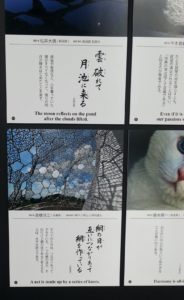
Inside, the eclectic style succeeds in bringing you calm and energy.


It turns out that Tsukiji Hongan-ji, a temple of Shin Buddhism, had stood here for more than two centuries before destroyed in the Great Kanto Earthquake. The architect Ito Chuta took the chance to rebuild it with an exterior in Indian style. And a sense of joy.

Fragments of spring
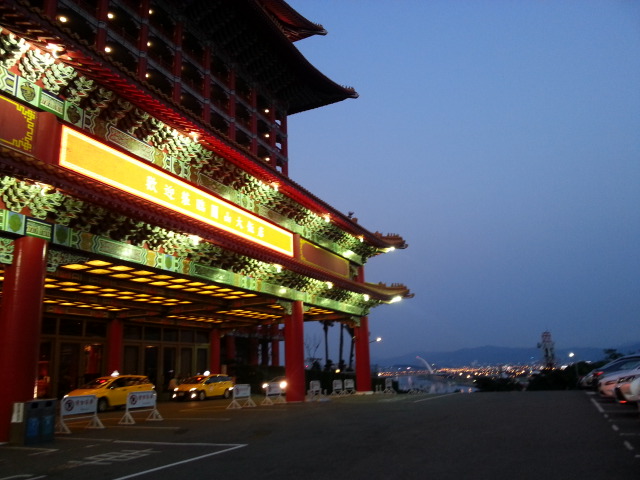
Leaving the view from the Grand Hotel Taipei.
Time capsule
Close to the subway station of Shiodome, at Ginza’s outskirts, I remember coming across Nakagin Capsule Tower, one of the most iconic buildings in a city full of iconic.

The capsule tower is an apartment complex made of modules. According to architect Kisho Kurokawa’s vision they were meant to be replaced as they got old, making the building evolve. And this organic evolution gave its name to the optimistic trend of metabolist architecture.
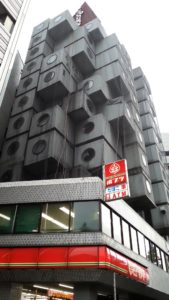

That one turned out an ambitious plan and never materialized. The building is now run-down, although some capsules are still in use. On the other hand, its style seems to have defeated time.
Two of the faces of twentieth century
(The first appearance of this post was on iaponia.gr)
The area around the subway station of Azabu-Juban brings together two of the faces of Tokyo past: futurism and shitamachi.
In 1971 Andrei Tarkovsky shot the science fiction classic “Solaris”. In an evocative sequence the hero is driven through the streets of a city before he leaves for his trip to space, and a discreet feel of futuristic life is achieved. The sequence is called “City of the future” and was shot in Tokyo with no special effects.
One of the filming locations was the junction at Azabu-Juban.
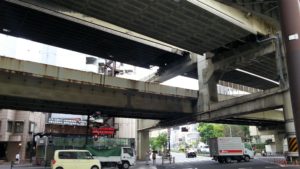


Of course today it’s not only the bridge but also the buildings from somewhere around the ‘70s.
At the same time, all you have to do to find one of the once omnipresent streams is to take a turn a couple of blocks further away…



…and, in doing so, pass the invisible border towards a tiny shitamachi neighborhood.

Shitamachi was the downtown aesthetic in the beginning of the 20th century, the sort of passage from Edo to Tokyo.


The archipelago of the “city of the future” still has islets of small streets with wooden buildings, flower pots on tarmac and residents that somehow look as if they always belong there.

Anyone trying to understand the picture formed by the puzzle called Tokyo will get a few additional pieces by making a stop at Azabu-Juban.
Hammam new year
What’s merrier than past blending into now, extrapolating into future? Hot baths, marble, arab lamps, canned water, led panels, wifi routers, inflatable pagan ornaments.
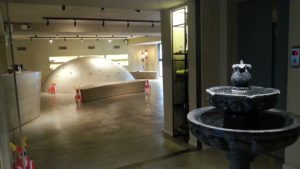
Concrete archipelago

Athens. Partial view from the astronomical observatory.

